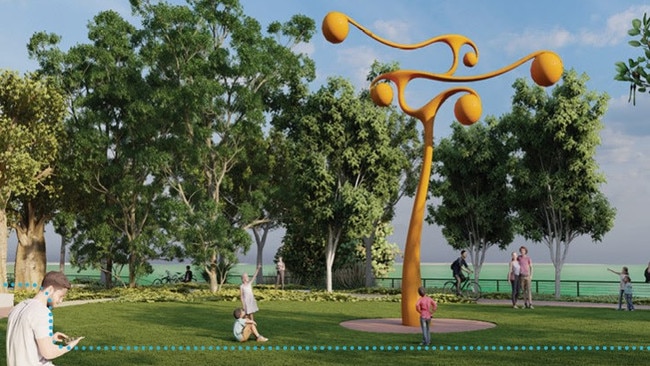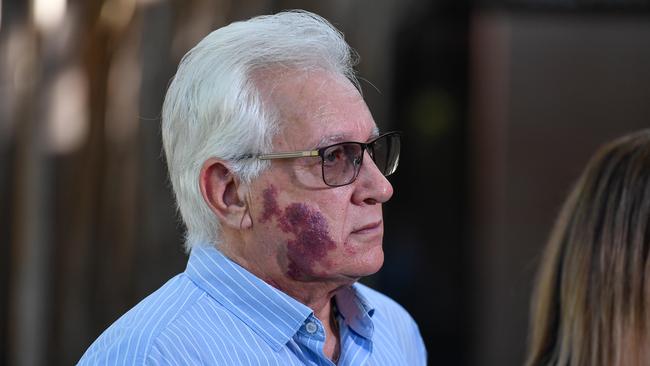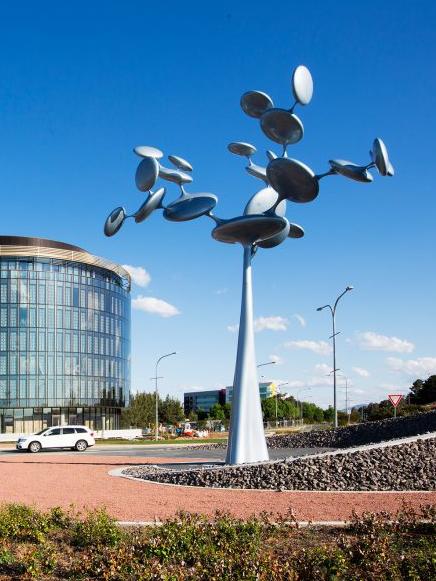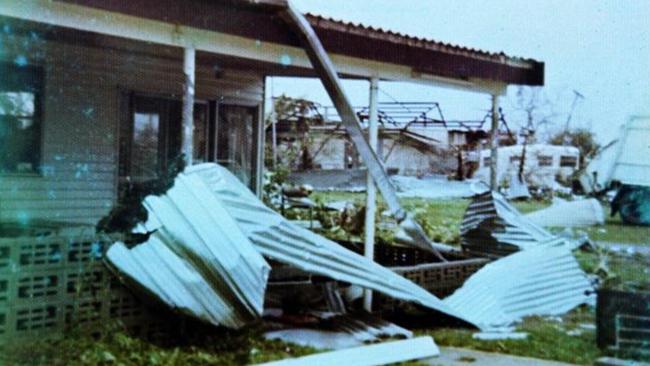Darwin City Council defends wind-activated Cyclone Tracy sculpture as separate to memorial
Darwin Council has revealed why it chose a $700k design that has been ridiculed by many Territorians, with one prominent Cyclone Tracy survivor suggesting it to “go back to the drawing board”.

News
Don't miss out on the headlines from News. Followed categories will be added to My News.
Darwin City Council has defended its contentious Cyclone Tracy sculpture, with the Lord Mayor arguing that the “public artwork” will accompany a separate, proper memorial.
Some survivors remain unconvinced, with a spokeswoman for one group claiming the vast majority of the community “don’t want to go anywhere near it”.
According to Darwin Lord Mayor Kon Vatskalis, the $700k wind-powered sculpture unveiled last Friday “aims to recognise the effects this devastating event had on our community in a meaningful and permanent way”.
“It will be a symbol of resilience and perseverance amid adversity, honouring the memories of those lost, validating the experiences of survivors, and reflecting the spirit of the Darwin community,” he said in an announcement.
Of the total spend, the federal government donated $300k for the sculpture at Bundilla Beach, as well as another $300k for a separate memorial at East Point, the latter being built by Remembering Cyclone Tracy Inc.

Following sharp backlash on social media from some survivors and the general public, with comments ridiculing the sculpture as a “mango tree” and “kid’s playground”, a council spokeswoman said the final design was a “unanimous” choice of the three presented by New Zealand sculptor Phil Price.
“In October 2023, the Cyclone Tracy Commemoration Advisory Committee agreed that a sculpture should be developed to educate the community about Cyclone Tracy; provide people with a place to gather; be kinetic and move with the wind; include a sitting place with information; and be located on the coast with sunset or sunrise views,” she said.
“The only artist who could develop a piece of artwork to fit this brief was Phil Price, as his pieces are the only kinetic sculptures that are made of carbon fibre and can withstand Darwin’s environment.

“(The sculpture’s) movement is dictated by the force of the wind, and is a reminder of the unpredictability of the elements.
“The sculpture with its three expanding and retracting branches represents themes of growth and regeneration, with the undulating limbs reflecting the movement of the waves on the shoreline.”
The spokeswoman did not comment on how many Tracy survivors were engaged during the consultation.
Robyn Cooper-Radke, 61, questioned how the sculpture would achieve the council’s intended goals.
She was 12 years old when she lost her family home to Tracy, being forced to live with relatives in New Zealand for five months where she now permanently resides.


“When I saw (the design), all I could think about was that night of Tracy and the fear and being petrified that something was going to fall on me,” Mrs Cooper-Radke said.
“I’ve learned to live with it but it’s always there. Every now and then there’s a trigger, when you hear something rattling or the smell of wet carpet, and I’m that 12 year old girl again.
“What does (this sculpture) have anything to do with what we went though?
“According to the Lord Mayor, it’s supposed to honour those people who lost their lives. This does not reflect the lives lost or the experience of survivors.”

Mrs Cooper-Radke has run the Cyclone Tracy Survivors Facebook group for 12 years, which counts more than 6000 members, and said all but a few of the “hundreds” of comments disapproved of the design.
She said an adequate sculpture would need to be “tranquil”, “reflective” and commemorate first responders as well, something achieved in her opinion by the Darwin bombings memorial on the esplanade.
“The public have spoken and the best thing they can do is go back to the drawing board.”
Darwin Council’s Tracy committee consists of representatives from government, the Defence Force, Larrakia Nation, and four community members including survivors.
It is understood that the federal government contribution was made before the design was selected.
Seventy-one people died when Tracy made landfall on Christmas Eve, 1974, while 41,000 people were left homeless.
More Coverage
Originally published as Darwin City Council defends wind-activated Cyclone Tracy sculpture as separate to memorial




